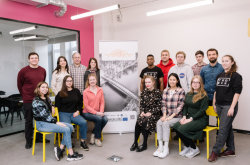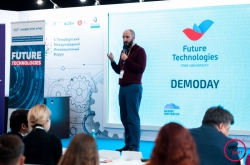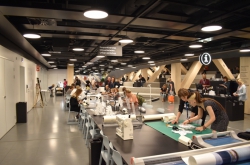The project’s agenda
Europe is the ‘oldest’ continent with 23 of the 25 countries with the oldest population in the world. Moreover, five Interreg BSR members are among the ten ‘oldest’ nations in the world. As global aging accelerates, we face enormous social and economic challenges. Companies now have to modify their products and adjust them to the needs of older customers. It’s the same thing with public places (theaters, libraries, museums, restaurants and so on) which should also be developed.
Modern public spaces should be accessible to all groups of people. Using the creative industries’ potential of the countries participating in the program, combined with introduction of IT solutions in the production of smart furniture, will allow participants of the project to bring their business ideas into life and make public spaces more comfortable for everyone.

In Estonia and Finland, for example, a large percentage of seniors traditionally attend church every Sunday, where they meet with their friends. Many of these people experience mobility problems. To help them, the project participants plan to develop infocommunication solutions that will allow older people to participate in social events without leaving their houses (for one, broadcasts with AR elements or in 360 format). The goal of the BaltSe@nioR 2.0 project is to prepare the participating countries for changes and turn these changes into opportunities for business, enterprises and government agencies.
Participants of the project
As of now, nine countries are collaborating on the project: Poland, Sweden, Russia, Latvia, Germany, Denmark, Finland, Estonia and Lithuania. The project was initiated by the Poznan University of Life Sciences. Also participating are the Technical University of Munich (64th place in QS World University Rankings), Art Academy of Latvia, Satakunta University of Applied Sciences, Finland, and others. The project also features a number of associated organizations, which participate in its activities but do not receive any funding; these include the city of Hamburg (Germany), Tibro Municipality (Sweden), and Pori City Library (Finland). Apart from higher education institutions, also involved in the project are companies, municipalities and nonprofit organizations offering a wide range of competencies and expertise in the field of longevity issues.
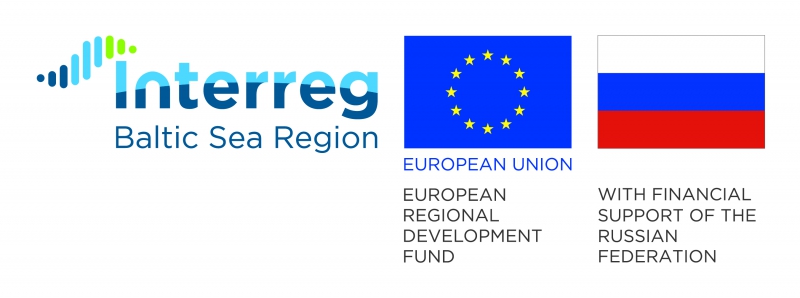
The result of the work will be an e-book of successful cases implemented in public spaces in the countries of the Baltic region. According to the authors of the project, such a book can become a source of inspiration for the authorities willing to make their cities more accessible. Apart from that, the participants plan to open several public spaces on their own in order to clearly demonstrate how an accessible environment should look like. Such public spaces will not only create a platform for knowledge and experience exchange, but also offer the potential to significantly improve the situation in some parts of the region.
ITMO University’s work on the project
The consortium of eight countries of the Baltic Sea region and Russia is represented by a network of leading institutions in a number of different fields: design, economics, accessibility, information and communication technologies, AR/VR, robotics, and furniture manufacturing. It is the expertise in these areas that will be combined by the participants as part of their work on the project. Russia became a member of the Interreg BSR program later than the rest of the participants, and ITMO University joined the project after its launch by the European colleagues.
Each partner will work on their own set of tasks. For one, ITMO University’s remit is to propose the best practices in the creation of accessible environment for older people on behalf of the Russian side of the project, provide expertise and generate content in the AR/VR format, as well develop the furniture that is safe for use by older people and people with disabilities which will interact with the VR content. Representing ITMO in the project are staff of the university’s Center for Project Development and Fundraising, a PhD in social sciences Lyudmila Vidyasova, as well as the Center of Usability and Mixed Reality.

“Despite the fact that ITMO University is responsible for the IT part of the project, we are also expected to conduct research in the field of longevity issues. That is why, in the framework of our work on the project we plan to involve specialists with relevant expertise. Namely, we plan to work with researcher Lyudmila Vidyasova, who has several publications dedicated to the issues experienced by older people in Russia. We will analyze what has already been done in Russian public spaces in regard to their accessibility to seniors; this could be libraries, museums, hospitals, or higher education institutions. We will consider both successful cases and those that need to be improved,” explains Igor Kuprienko, head of ITMO University’s Center for Project Development and Fundraising.
Safe furniture for older people
It is planned that the new public spaces adapted for older people, as well as existing spaces that call for improvement, would provide visitors with the opportunity to interact with new technologies and use them to continue their socializing activities. For example, seniors will have access to educational and relaxation VR content. Older people and children have been found to have a larger risk of falling or experiencing spatial disorientation when using VR helmets than young adults. Taking this into consideration, the project’s participants will work on developing special furniture that would ensure a high level of security for users during their immersion into the content offered.
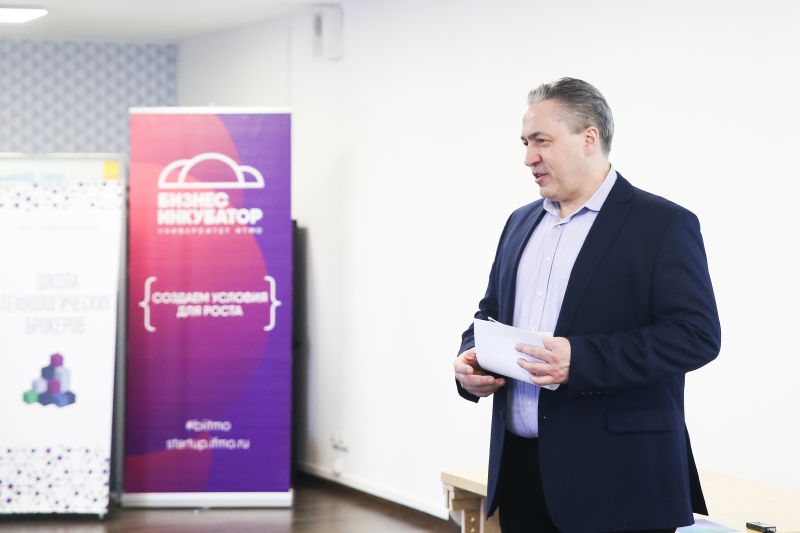
“We have been exploring the concept of tables and chairs that limit the risks of the VR content immersion. Older people’s vestibular system often works not as well as that of younger ones, which gives rise to problems with the feeling of the horizon, a very important aspect of the interaction with virtual reality. It can prove difficult for seniors to interact with VR content for longer than seven minutes because dizziness can occur. The furniture we are working on will allow people to consume this kind of content in a stable sitting position, which will make it possible for them to wear VR helmets for longer,” says Igor Kuprienko.
As of now, the first maquette of a set consisting of a table and a chair has already been produced as a 3D-printed model; it is expected that a test sample will be created in its image by the end of 2019. The table-and-chair complex’s design was thought out as a futuristic project, similar to one implemented by ITMO together with the St. Petersburg Stieglitz State Academy of Art and Design in 2017. The two-part development is planned to come as a single set, and both elements have to be light, easily portable, and blend well into office spaces.
Implementation of the project
In the course of a year, participants of the project will assemble an e-library with the best practices of adapting the spaces for older people throughout the BSR program’s territory. In summer 2020, a meeting will be held in St. Petersburg presenting these best practices to the participants.
Until the end of 2019, ITMO University staff will develop the concept of the table-and-chair set and generate a test sample. Work will also begin on the production of VR and AR content, as well as 360-degree videos both for the training and relaxation purposes. In the future, all this content will be offered to older users. These content-developing activities will continue all the way to 2020. ITMO University staff members also plan to hold several events which older people or people with disabilities would be able to attend without leaving their homes with the help of 360-format video technology and the innovative set the university’s specialists are now working on.
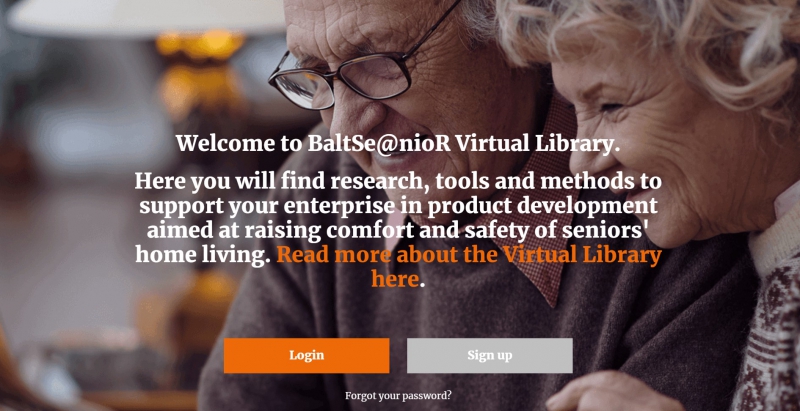
“After the project comes to an end and the parties will come up with final recommendations on the creation of accessible public spaces, we intend to send these recommendations to relevant committees and agencies so that in the future, these will make urban and public spaces more comfortable for older people,” concludes Igor Kuprienko.
The Interreg BSR program supports comprehensive territorial development and cooperation for a more innovative, accessible and sustainable Baltic Sea region. Partners from the Baltic Sea region countries conduct joint work on transnational projects focusing on key common problems and opportunities, and also finance these projects through on the partnership basis. Russia is among the countries participating in the program. BaltSe@nioR 2.0 is one of the program’s projects aimed at facilitating older people’s adaptation to modern spaces.



